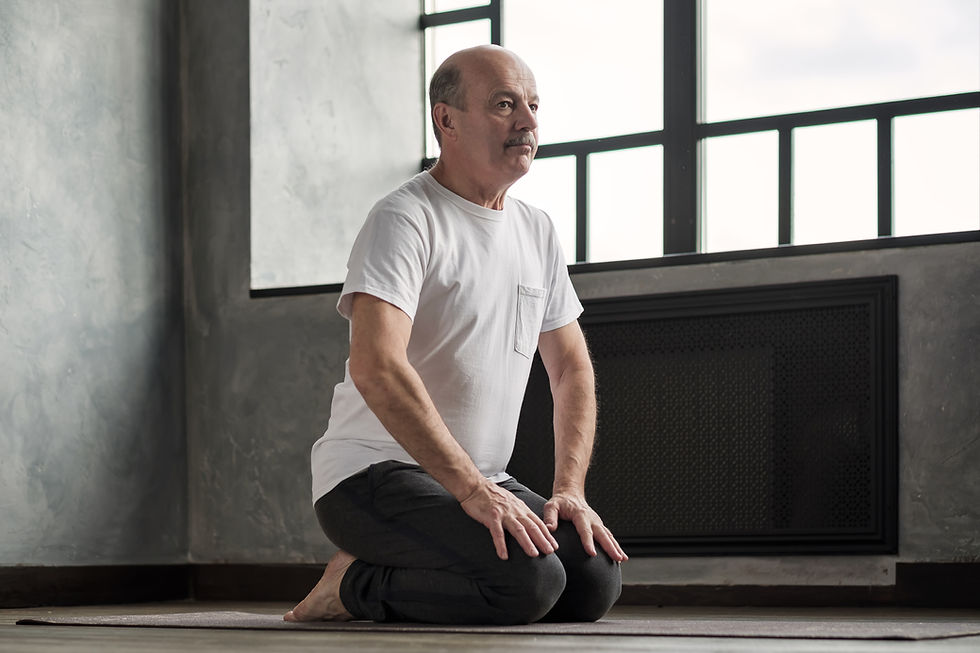How Can Triathletes Prevent and Treat Shin Splints for Happy, Healthy Shins?
- John Mendenhall
- Apr 18, 2024
- 3 min read
Updated: Jul 22, 2024
Say Goodbye to Shin Splints: A Triathlete's Guide to Keeping Your Shins Happy and Healthy!

Are shin splints raining on your triathlon parade? Fear not, fellow athlete! Let's tackle this annoying pain head-on with some education and practical tips!

The bane of every triathlete's existence, shin splints! Also known as Medial Tibial Stress Syndrome (MTSS) or Anterior Tibial Stress Syndrome (ATSS), it's like a cranky neighbor who shows up uninvited just when you're hitting your stride. Picture this: you're out for a run, feeling unstoppable, when suddenly, a sharp pain in the inner (or outer) and lower two-thirds of your shin brings you crashing back to reality. Ouch!
What Are We Up Against?
Shin splints don't discriminate – they'll crash anyone's party, from seasoned runners to fresh-faced recruits. Studies show that anywhere from 13.6% to 20% of runners and up to 35% of military recruits fall victim to shin splints. Dancers aren't safe either, with approximately 20% of them and up to 35% of dance recruits feeling the sting of shin splints. So, what's the culprit? Quick increases in running volume, high-impact exercises, gender, and a laundry list of other factors can put you at risk.
What's Going on in There?
The science behind shin splints is like a mystery novel – intriguing yet elusive. While experts are still piecing together the puzzle, it's believed that microdamage in the cortical bone of the tibia plays a starring role. One theory points to inflammation of the periosteum (that's the bone's outer layer) due to excessive pulling from muscles like the tibialis posterior or soleus. Think of it as a tug-of-war gone wrong inside your leg!

The Detective Work
How do you know if you're dealing with shin splints or just a case of "I pushed myself too hard" syndrome? Keep an eye out for increasing pain along the inner (or outer) border of your shins during exercise, tenderness along the affected area, and maybe even a tight Achilles tendon thrown into the mix. Tight calf muscles and decreased ankle range of motion can lead to increased stress to this area of the lower leg. Do you know if you have good ankle flexibility? Take the test here, or get it tested by a physical therapist!

Management
When it comes to managing shin splints, it's all about taking a step back and giving your body the TLC it deserves. Rest, ice, light stretching, massaging the area, and taping will work wonders in the acute phase. But this is not the end of the road. Catching injuries early sets you up for feeling better faster. An assessment by a health care professional like a physio can determine the best course of action for your specific body to recover! Don't worry, you won't be stuck on the sidelines forever! Gradually easing back into activity, focusing on strength and flexibility, can actually make you a faster runner when you get back into the full swing of things. Trust the process, know that healing takes time, and if someone tells you a shortcut, it's likely too good to be true. Try theses exercises when the first signs start! 3 sets of 30 seconds daily with active rest (hold off on running but stay active with cross training).


Prevention: Keeping Shin Splints at Bay
Prevention is better than cure, especially when it comes to shin splints. Here are some tips to keep your lower legs healthy:
Gradually Increase Training Load: Avoid sudden spikes in your running volume (no more than 10% increase each week).
Strength Training: Focus on strengthening the muscles of the lower leg, particularly the triceps surae.
Flexibility: Maintain good flexibility in your legs to prevent muscle imbalances.
Proper Footwear: Invest in good-quality running shoes that provide adequate support and cushioning, rotate them frequently (back to back running days should be done in 2 different shoes).
Varied Running Surfaces: Mix up your running terrain to reduce the repetitive impact on your shins.
Listen to Your Body: Pay attention to the warning signs and rest when necessary.
Hire a qualified coach that is in constant communication with you to adjust your workouts and allow you to progress your training with a decreased risk of injury!
By understanding the risks and taking proactive measures, triathletes can minimize the chances of developing shin splints and maintain a healthy, injury-free training regimen. Remember, taking care of your body is just as important as pushing it to achieve your triathlon goals. Stay safe and happy training! 🏊♂️🚴♀️🏃♂️

Dr. John Mendenhall II PT, DPT
@Triathlo101 on YouTube
References
McClure CJ, Oh R. Medial Tibial Stress Syndrome. 2019 Available:https://www.ncbi.nlm.nih.gov/books/NBK538479/ (accessed 2.6.2022)
Lohrer, H., Malliaropoulos, N., Korakakis, V., & Padhiar, N. Exercise-induced leg pain in athletes: diagnostic, assessment, and management strategies. The Physician and sports medicine. 2018




Comments